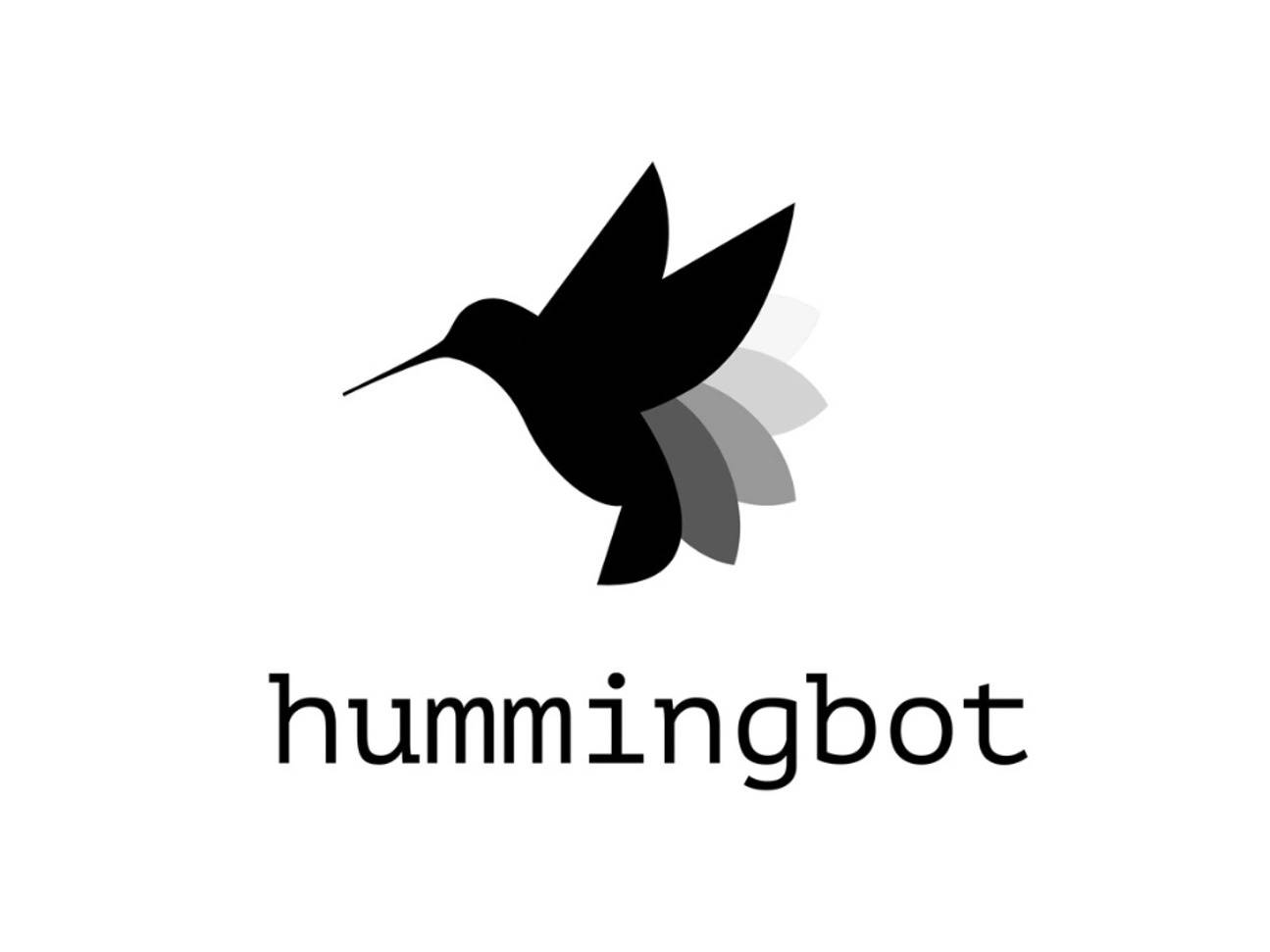Subscribe to wiki
Share wiki
Bookmark
Hummingbot
The Agent Tokenization Platform (ATP):Build autonomous agents with the Agent Development Kit (ADK)
Hummingbot
Hummingbot is an open-source framework created for building cryptocurrency trading strategies and bots founded by Michael Feng, Carlo Las Marias, and Martin Kou. [1][2]
Overview
Hummingbot is an open-source software client that allows users to create and monetize automated and algorithmic trading bots. It serves as an easy-to-use command-line interface, enabling users to configure, customize, and run automated bots and other strategies for market making. By offering market-making capabilities on both decentralized and centralized digital asset exchanges, Hummingbot opens up trading opportunities previously limited to algorithmic hedge funds. The software incorporates Cython, which compiles Python into C, to enhance performance and reliability at an institutional level. It utilizes low-level programming techniques to optimize memory efficiency and speed, necessary for executing high-frequency trading algorithms. [3]
The Hummingbot Foundation, a not-for-profit organization, oversees the open-source Hummingbot code repository and the HBOT governance system. The Foundation upholds core principles such as open-source availability, modularity, extensibility, and inclusiveness, catering to both individuals and professionals in the trading community. The team also makes sure that regular financial reports are published, providing insight into income sources, expenditures, and fiat and crypto treasury balances. [4]
Origin
Hummingbot was developed by CoinAlpha, a software startup and liquidity provider supported by Initialized Capital, Bain Capital Ventures, and other prominent investors. In early 2019, CoinAlpha recognized the need for increased liquidity in the cryptocurrency market. They noticed that traditional market makers in the crypto industry often impose high costs and technical requirements, akin to quantitative hedge funds, which hinder accessibility for many traders and token projects. Identifying this opportunity to contribute to the growth of the cryptocurrency ecosystem, they began developing an open-source market-making bot called Hummingbot. [5]
Hummingbot was initially launched in April 2019 as a straightforward open-source market-making bot. Over time, it evolved into a framework that enables users to create customized trading strategies on any cryptocurrency exchange. [6]
In December 2021, CoinAlpha established the Hummingbot Foundation as an independent open-source entity responsible for maintaining the Hummingbot Github repository. Now the foundation operates a decentralized system of software development driven by the community. [6]
Hummingbot Miner
Hummingbot Miner is a platform designed for liquidity mining, enabling sponsors to incentivize liquidity provision on order book-based exchanges. By participating in the Hummingbot Miner, users have the opportunity to earn token rewards by providing liquidity for specific trading pairs. [7]
The Miner App serves as a hub where users can set up their liquidity mining activities and monitor real-time rates of rewards and performance. It provides a convenient way to track payouts and observe market leaders. Liquidity mining involves a community-driven and data-based approach to market-making, where token issuers or exchanges reward a pool of miners to ensure sufficient liquidity for a particular token. [3][8]
Additionally, it operates on a non-custodial basis, meaning the platform does not control the tokens belonging to participants. To get started as a liquidity provider on Hummingbot, users need to have two sets of API keys. Participants can utilize their own trading bots and strategies or access quant/algo strategies provided by Hummingbot if they don't have their own bots. [3][8]
HBOT
The HBOT token, first distributed on December 17, 2021, serves as the Hummingbot governance token. It is an ERC-20 token with a fixed total supply of 1,000,000,000 tokens, meaning no additional tokens will be created. [9][10]
The primary purpose of the HBOT token is to enable holders to participate in the governance of the Hummingbot codebase. HBOT token holders have the authority to vote on three types of proposals: Pull Request Proposals (PRP) linked to open pull requests, Improvement Proposals (IP) suggesting enhancements to the codebase, and Governance Proposals (GP) for modifying the Foundation's governance system or distributing HBOT tokens from the treasury. [9][10]
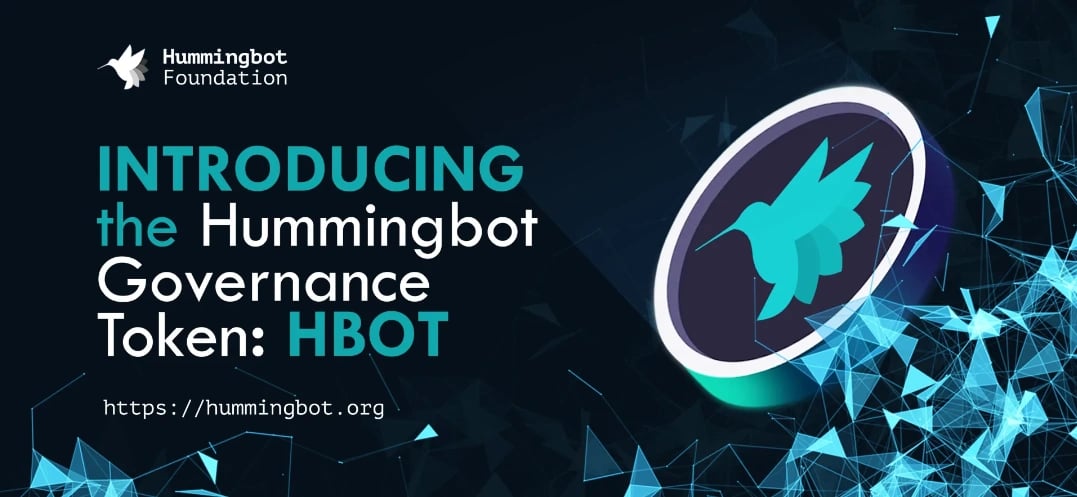
Token Distribution
The distribution plan for HBOT tokens aims to involve stakeholders who contribute to the long-term growth of the Hummingbot project. The breakdown of the token distribution is as follows:
Hummingbot Community Pool (40%)
This allocation ensures that stakeholders with experience in Hummingbot development and expertise in related fields, such as trading, markets, and software development, have a voice in Hummingbot's governance. These individuals will contribute to the project's future decision-making. [10]
CoinAlpha Investors (37.9%)
Given the integral role of CoinAlpha in supporting the creation and development of the Hummingbot codebase, 37.9% of the total HBOT token supply is allocated to CoinAlpha equity holders. These tokens are subject to a 1-year lock-up period, with a linear release schedule over the subsequent year. [10]
Future Community Activities (36%)
This portion, accounting for 36% of the total HBOT token supply, is reserved for future activities within the Hummingbot community. Token distribution for these activities will be determined through Governance Proposals, allowing token holders to vote on the allocation of tokens for initiatives such as grants or further development of the codebase. [10]
CoinAlpha Team (21.1%)
A 21.1% token allocation is reserved for CoinAlpha team members, advisors, and service providers. Similar to the investor tokens, these tokens will be subject to a 1-year lock-up period and released linearly over the subsequent three years. [10]
Retroactive Distribution (4%)
4% of the total HBOT token supply is allocated to historical Github code contributors and users of the Hummingbot Miner platform. Github contributors who were not full-time employees of CoinAlpha during their contribution will receive an allocation based on their past contributions. Additionally, Hummingbot Miner users who have actively participated in providing feedback, bug reports, testing, and feature requests will also receive an allocation based on their historical activity. [10]
Hummingbot Foundation Team (1.0%)
The remaining 1.0% token allocation is dedicated to current and future team members of the Hummingbot Foundation. These tokens will also be subject to a 1-year lock-up period, with a linear unlock schedule over three years. [10]
Governance
The Hummingbot Foundation has a governance system that grants authority to holders of the Hummingbot Governance Token (HBOT) to shape the direction of the Hummingbot codebase and the overall governance process. Through voting on proposals, HBOT holders can actively contribute to the decision-making process. [11]
Process
The governance system leverages Snapshot, an established platform, to facilitate HBOT governance. All proposals are accessible on the official Hummingbot Snapshot. [11]
Proposal Types
There are three initial types of proposals, each with different governance parameters:
Pull Request Proposal (PRP)
PRPs are linked to open pull requests on the Hummingbot code repository. The PRP process involves the following steps:
- A community member creates a GitHub pull request.
- An HBOT holder with at least 1 HBOT voting power generates a PRP on Snapshot linked to the pull request.
- The Foundation conducts a preliminary review and adds the results to the issue.
- The community has 7 days to discuss, review, and vote on the PRP.
- If the voting threshold of 1% of the total circulating supply of HBOT tokens is met and at least 50% of votes approve, the Foundation labels the pull request as "approved."
- After a final review, the pull request is merged into the development branch.
- If the pull request is associated with a bounty or grants program, the Foundation facilitates the release of funds and invoices the sponsor for administration fees.
Improvement Proposal (IP)
IPs are linked to issues in the Hummingbot Github repository, proposing enhancements to specific components of the codebase. The IP process includes the following stages:
- A community member creates a GitHub issue.
- An HBOT holder with at least 10,000 HBOT voting power creates an IP on Snapshot linked to the issue.
- The community has 7 days to discuss, review, and vote on the IP.
- If the voting threshold of 3% of the total circulating supply of HBOT tokens is met and at least 50% of votes approve, the Foundation labels the issue as "approved."
- The Foundation assigns the issue to the relevant Maintainer or creates a bounty to incentivize Contributors.
- After the development work is completed, a pull request is submitted following the Pull Request Proposal process.
Governance Proposal (GP)
GPs are proposals linked to issues in the Hummingbot Github repository, aiming to modify the Foundation's governance system or allocate HBOT tokens from the treasury. The GP process involves the following steps:
- A community member creates a GitHub issue.
- An HBOT holder with at least 50,000 HBOT voting power creates a GP on Snapshot linked to the issue.
- The community has 7 days to discuss, review, and vote on the GP.
- If the voting threshold of 10% of the total circulating supply of HBOT tokens is met and at least 66 ⅔% of votes approve, the Foundation labels the issue as "approved."
- The Foundation implements the proposed change or initiative, and the issue is closed.
[12]
The governance system allows for modifications to approval thresholds, quorum thresholds, board of director elections, and Maintainer elections through Governance Proposals. However, changes to the Foundation bylaws, HBOT token distribution and issuance mechanics, and HBOT total supply are not within the scope of Governance Proposals. [12]
Board of Directors
The Board of Directors oversees and manages the Hummingbot Foundation and its activities, including the HBOT treasury. [13]
Role & Responsibilities
The Board is composed of a committee of five individuals who handle the administration of the Hummingbot Foundation. They serve as custodians of the multi-signature wallet holding the HBOT treasury. The Board conducts quarterly virtual meetings for handling multi-signature transactions related to HBOT distributions. [14]
Requirements
Membership on the Board is open to all members of the with prior experience with the Hummingbot community. They are elected by HBOT holders. Proficiency in managing a Gnosis multi-signature wallet is essential, as three out of the five board members' signatures are required for transactions from the Foundation's HBOT treasury. Serving on the Board is voluntary and unpaid, following the Foundation's bylaws . [15]
Election Process
The election of the Board of Directors occurs every 12 months through a Governance Proposal. A nomination thread is initiated on Discord one month before the election, allowing past board members and interested individuals to apply. The election takes place as a Hummingbot Governance Proposal, using Snapshot gasless voting and quadratic voting allocation. After one week, the top five candidates with the highest vote counts are appointed to the Board of Directors for a one-year term. [16]
Members
- Brett Gibson: Managing Partner, Initialized Capital
- Gene Cheon: COO, Hummingbot Foundation
- Hoang La
- Michael Feng: Board member, CoinAlpha
- Michael Timmons
Partnerships
KuCoin
On January 13, 2020, Hummingbot announced a partnership with the cryptocurrency exchange KuCoin. This collaboration enabled KuCoin users to directly deploy Hummingbot's quantitative and algorithmic strategies such as including market making, arbitrage, and liquidity mirroring, as well as trade execution strategies such as TWAP and VWAP execution. [20]
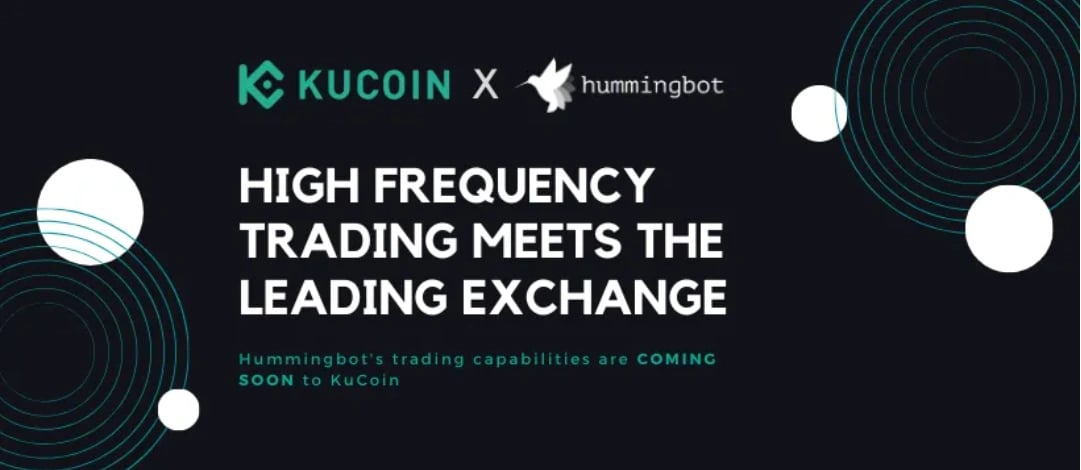
Celo
On June 3, 2020, Hummingbot established a partnership with the blockchain platform Celo to explore arbitrage opportunities. This collaboration focuses on utilizing Hummingbot's trading capabilities to enhance arbitrage strategies within the Celo ecosystem. The aim of the partnership is to foster efficient and profitable trading activities. [21]
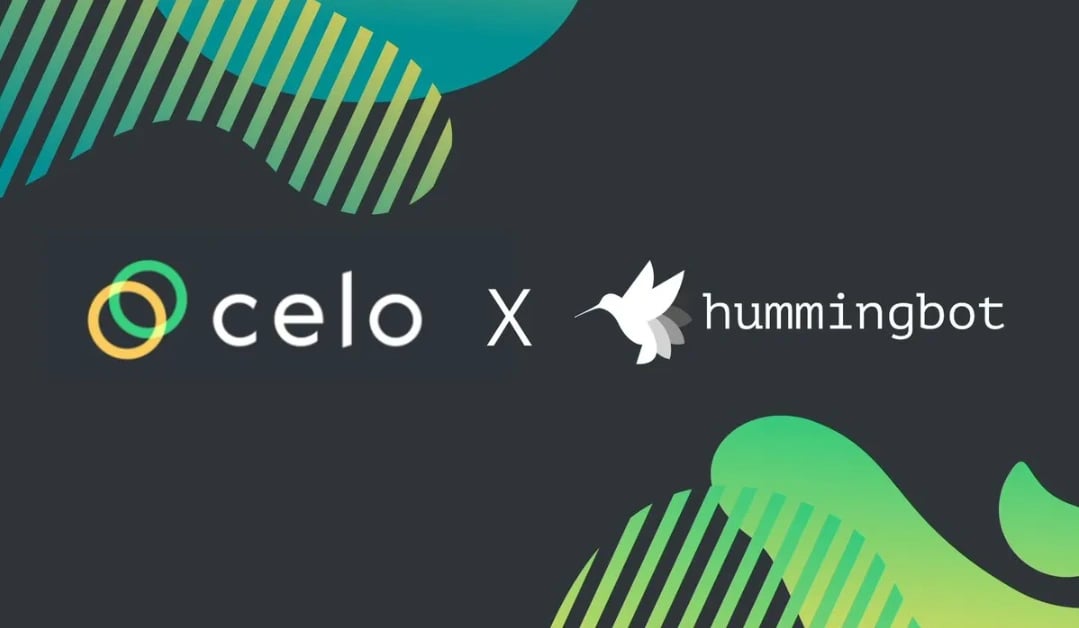
Balancer
On November 11, 2020, Hummingbot initiated a partnership with the decentralized exchange Balancer. This collaboration was made to optimize arbitrage strategies within the Balancer protocol using Hummingbot's advanced trading software. The partnership seeks to enhance liquidity provision and enable more efficient trading activities. [22]
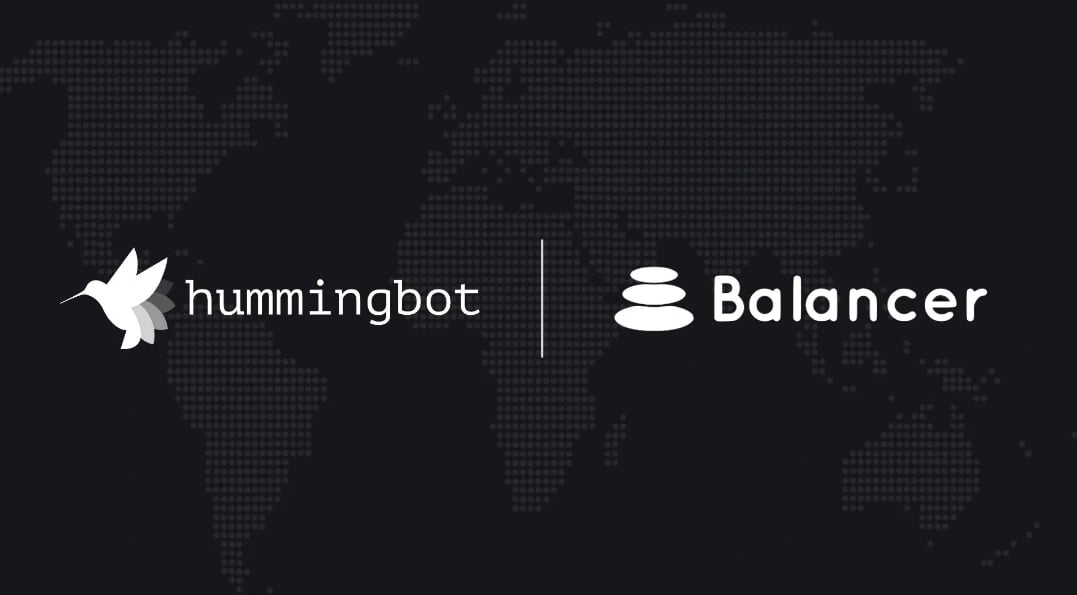
Blocktane
On February 2021, Hummingbot announced a partnership with Blocktane, a liquidity network for decentralized exchanges. This collaboration focusede on developing a connector that enables seamless integration between Hummingbot and Blocktane's liquidity aggregation solution. The partnership aimed to enhance liquidity and trading opportunities across various decentralized exchanges. [23]
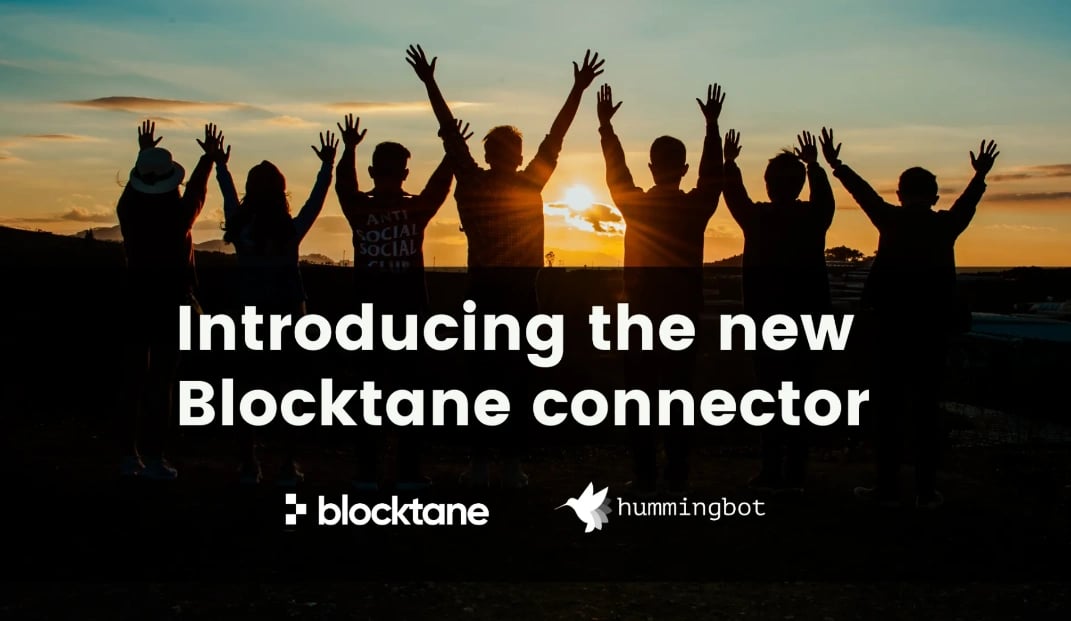
Perpetual Protocol
On March 4, 2021, Hummingbot partnered with Perpetual Protocol to explore spot trading opportunities. The collaboration aimed to utilize Hummingbot's trading software to develop efficient spot trading strategies within the Perp Protocol ecosystem. This enabled Hummingbot users to earn arbitrage profits from price differences between perpetual and spot markets. [24]
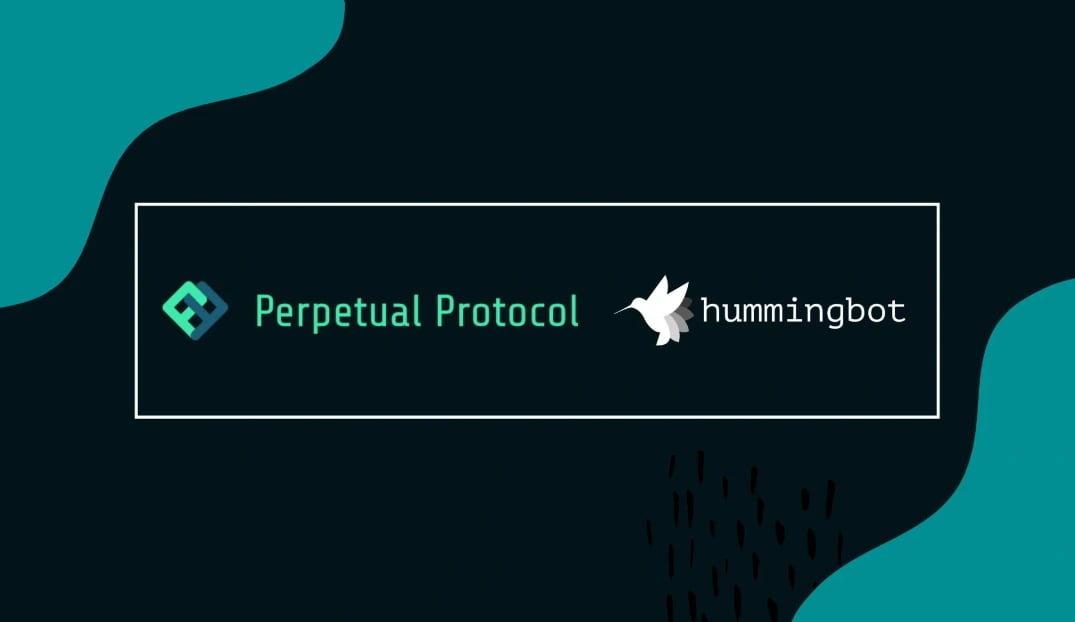
Uniswap v3
On May 31, 2021, Hummingbot introduced a partnership with Uniswap v3 to develop a strategy for the decentralized exchange. The collaboration focused on creating trading strategies within the Uniswap v3 ecosystem using the ability to create different positions at different price ranges. [25]
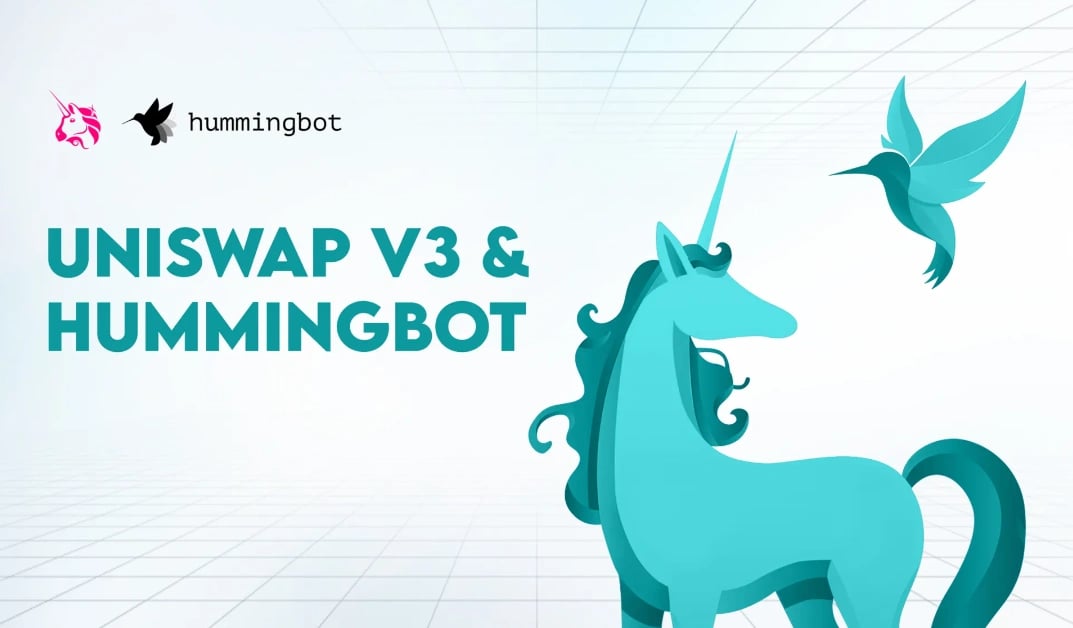
dYdX
On July 30, 2021, Hummingbot formed a partnership with dYdX that focuses on the development of a strategy for perpetual trading on the dYdX decentralized exchange (DEX). The aim of this partnership was to explore and optimize trading strategies within the perpetual market, leveraging Hummingbot's advanced algorithmic trading capabilities. Hummingbot and dYdX aimed to enhance liquidity provision and provide users with efficient trading opportunities. [19]
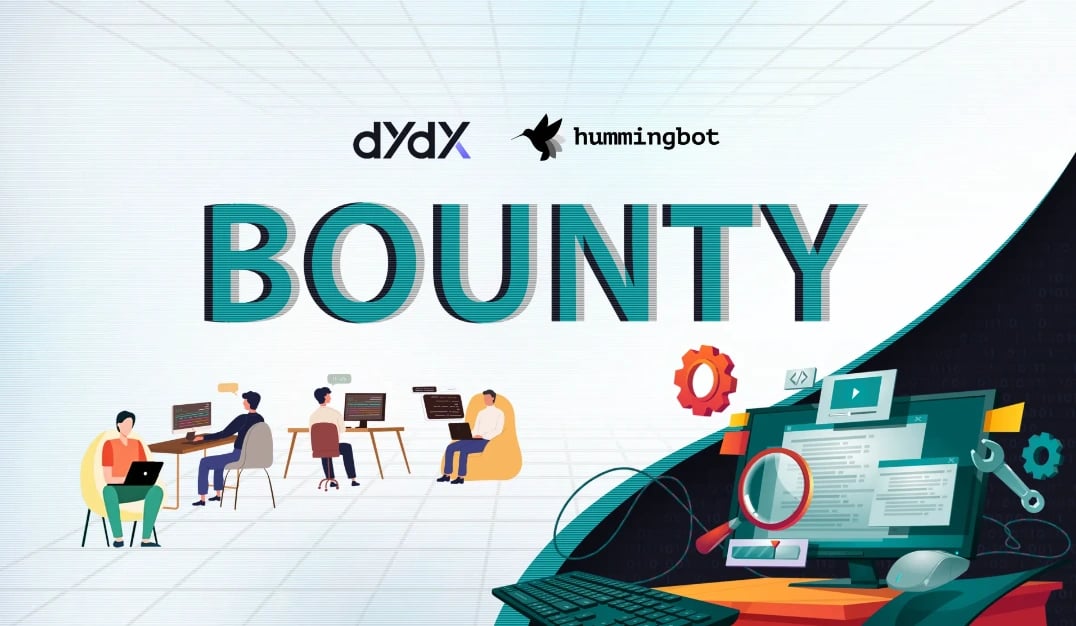
Harmony
Hummingbot solidified a partnership with Harmony to launch ONE Liquidity DAO on November 9, 2021. This collaboration aimed to foster liquidity and trading efficiency within the cryptocurrency ecosystem. With this collaboration, Hummingbot, Harmony, and ONE Liquidity DAO seeked to enhance market-making capabilities and promote seamless trading experiences for users. This partnership aligned with Hummingbot's commitment to facilitating liquidity provision and furthering the development of decentralized finance (DeFi) solutions. [18]
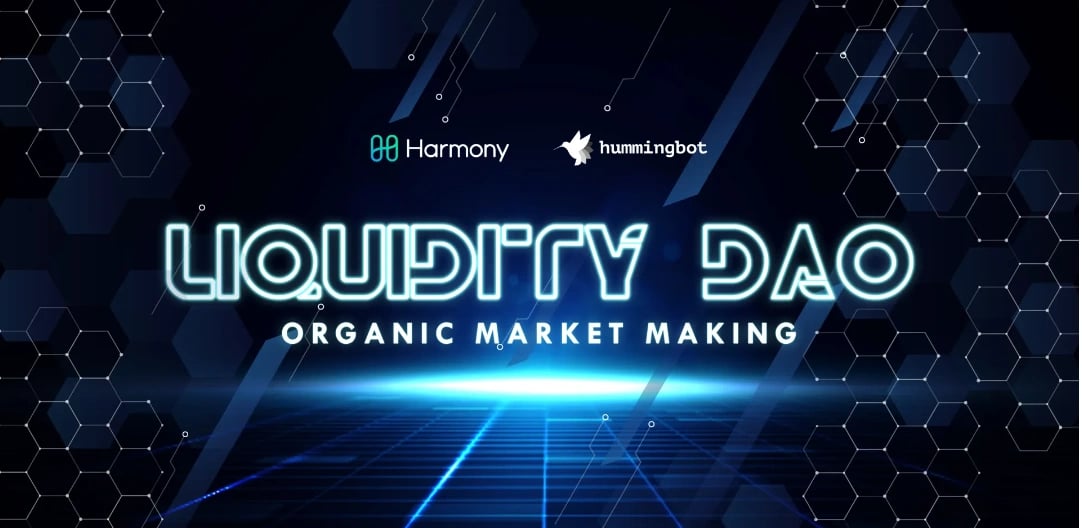
See something wrong?
The Agent Tokenization Platform (ATP):Build autonomous agents with the Agent Development Kit (ADK)
